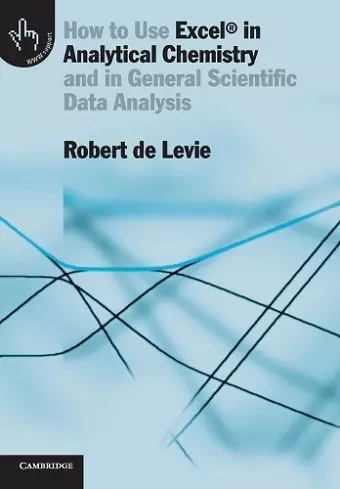How to Use Excel® in Analytical Chemistry
And in General Scientific Data Analysis
Format:Paperback
Publisher:Cambridge University Press
Published:5th Feb '01
Currently unavailable, and unfortunately no date known when it will be back

This textbook provides a comprehensive guide to using Excel for chemical analysis, making it a valuable resource for students in analytical chemistry.
In How to Use Excel® in Analytical Chemistry, readers are introduced to the powerful capabilities of Excel as a tool for scientific computing. The textbook is designed specifically for undergraduate and entry-level graduate students in chemistry and chemical engineering. With its intuitive layout and extensive mathematical functions, Excel serves as an accessible platform for exploring and solving various problems in chemical analysis. This resource stands out as the only contemporary text dedicated to the application of spreadsheets in the field of chemistry.
The book covers a wide range of topics essential for students, including statistical methods, chemical equilibria, pH calculations, and titration procedures. It delves into instrumental techniques such as chromatography, spectrometry, and electroanalysis, providing numerous examples of data analysis. The text emphasizes the use of spreadsheets for numerical simulations and testing analytical procedures, making complex concepts more approachable for learners.
Additionally, How to Use Excel® in Analytical Chemistry explores modern data analysis methods, including linear and non-linear least squares and Fourier transformation techniques. Readers will discover how matrix methods can be effectively applied within spreadsheets and learn to simulate chemical kinetics. The introduction of VBA, the macro language of Microsoft Office, further enhances the book's value, allowing users to integrate advanced computer programs into their spreadsheets, thus expanding their analytical capabilities.
'It is a smoothly written, excellent tutorial about how such spreadsheets are created, and thus how you can create your own quite complex spreadsheets … a very good book. No analytical chemistry teacher, no serious analytical chemistry student, should fail to acquire this book.' Roy W. Clark, Chem. Educator
'… this book is a welcome addition to my shelves. It is not for the fainthearted, with many complex calculations examined, but that is how it should be, for the complexity comes not from the way it is written, but from the subject matter tackled.' Pete Biggs, Chemistry and Industry
'… the book has also made me reappraise the power of spreadsheets in allowing scientists to visualise complex numerical data. I would happily recommend it to those interested in applying mathematical methods to chemistry, but who perhaps lack full command of a programming language.' Chemistry in Britain
'Spreadsheets are one of the most useful tools in scientific computing. The author has written a 'how to' book dealing with typical analytical chemistry calculations and using one of the most popular and widely available spreadsheet programs, Microsoft Excel. the range of topics covered is quite impressive and should meet the needs of most analytical chemists … It should also prove to be a valuable and useful supplement to courses in wet chemical or instrumental analysis.' Terrence A. Lee, Royal Society of Chemistry
'… a welcome addition …'. Peter Biggs, Chemistry & Industry
ISBN: 9780521644846
Dimensions: 249mm x 176mm x 26mm
Weight: 1017g
502 pages